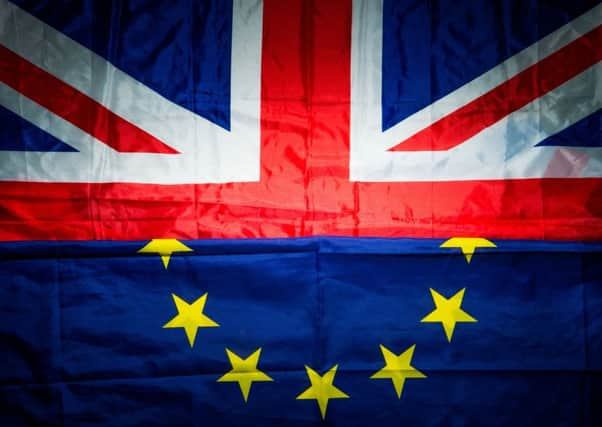Leaders: It has to be more than Boris v Cameron


Nothing is more important in the approach to the UK referendum on EU membership than that all issues are explored and the debate is wide ranging. But in recent days it seems to have become a personal battleground between Prime Minister David Cameron and London mayor Boris Johnson.
The latest exchange is a classic example of how internecine this affair has become. Is this a private party, or can anyone join in? This is not to deny that Boris Johnson has a point – indeed, some very searching points – to make on the issue of UK sovereignty and his critique that the government has not delivered “fundamental change” while David Cameron insists he has secured a commitment to exempt the UK from “ever closer union”.
Advertisement
Hide AdAdvertisement
Hide AdBut there are many who share the criticism that his reforms are meagre, even if they do not wholly accept Mr Johnson’s repeated warnings that we are faced with a “superstate into which we would inevitably be dragged”. Looking at the differences that have opened up on migration policy, and the humanitarian crisis now evident on the borders of the EU, it is by no means clear that the EU is heading towards anything like a “super-state”. Indeed, on this and other issues there is ample room to conclude that the concerns of individual member states are as keenly asserted as ever.
It is right, of course, that the argument should be broadened out from an exclusive focus on economic benefits and disadvantages. There needs for example, to be greater clarity on whether measures to bolster British courts and the House of Commons are compatible with EU membership. Can UK courts and Parliament overrule the EU Court of Justice which interprets EU law and ensures it is applied across all members states? Meanwhile, other voices need to be heard on the direction in which the EU is headed and what UK policy should be if we vote to remain a member.
But if the volume of dissent within the Conservative Party is unnerving, so, too, is the relative silence of the Labour opposition. Here the party is split between a large number of MPs who want to campaign for “Vote Remain” and those, like the party leader Jeremy Corbyn, who have a long history of opposition to the corporate tendencies of Brussels. Yesterday Labour MP and former cabinet minister Yvette Cooper colourfully attacked Boris Johnson’s comments as “wiffle waffle”.
But the Labour leadership has chosen to maintain a very low profile on what has been described as the most important vote on the future of the UK for a generation. Many in the party have sought to portray the EU as a vital guardian of employee rights and for that reason it should support the “Remain” camp.
But what of other EU legislation to which the opposition may take exception and then find that it cannot reverse as it overrides UK law? For these and other reasons, the EU referendum needs to be about more than the current bruising “Project Fear” battle between Boris Johnson and the Prime Minister.
Scotland’s visitor magnets are vital
Scotland’s tourism industry has long been regarded as the Cinderella of the economy – nice to have but not all that important. But spending by tourists in Scotland generates around £12 billion of economic activity and contributes around £6bn to Scottish GDP. So it is all the more heartening to learn that our leading visitor attractions outperformed the rest of the UK last year, even boasting a bigger average rise than London’s most popular sites.
Edinburgh Castle, the Royal Botanic Garden in the capital, the Scottish National Gallery, the Kelvingrove and Riverside museums in Glasgow and the Falkirk Wheel were among our best performers. Our leading attractions enjoyed an average increase of 5.48 per cent, compared to 3.2 per cent across the UK and 1.61 per cent in London. Both Edinburgh Castle and the National Museum of Scotland made it into the UK top 20, with a combined audience of more than three million. The museum alone brought in more visitors than the National Maritime Museum, Tate Britain, London Zoo and the Eden Projectand 2.1 million visitors flocked to the three main National Galleries of Scotland sites in Edinburgh. Kelvingrove and the Riverside were up 12.4 per cent and 7.8 respectively. This is a tribute to all those who work to ensure the attractions are up with the best in the world. And the wider benefits – particularly including visitor spend – are substantial.
Of particular importance is the role they play in helping to attract major international conferences.
Advertisement
Hide AdAdvertisement
Hide AdBut all this brings policy challenges – not only in maintaining the transport infrastructure in our cities but also in encouraging visitors to spend time outside the major cities. This is a vital economic lifeline and one to be shared across the country.